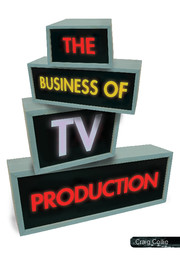Book contents
- Frontmatter
- Contents
- Preface
- Diagrams and tables
- Abbreviations
- Part A Opiate of the people: the television industry
- Chapter 1 Origins and growth of a global medium
- Chapter 2 The digital revolution
- Chapter 3 The industry in Australia
- Chapter 4 Television genres
- Part B Massage parlour: development and funding of a project
- Part C Riding the tiger: management of the production
- Part D A nod to the gatekeepers: the environment of television
- Index
- References
Chapter 2 - The digital revolution
Published online by Cambridge University Press: 05 June 2012
- Frontmatter
- Contents
- Preface
- Diagrams and tables
- Abbreviations
- Part A Opiate of the people: the television industry
- Chapter 1 Origins and growth of a global medium
- Chapter 2 The digital revolution
- Chapter 3 The industry in Australia
- Chapter 4 Television genres
- Part B Massage parlour: development and funding of a project
- Part C Riding the tiger: management of the production
- Part D A nod to the gatekeepers: the environment of television
- Index
- References
Summary
Digital television had been looming for a decade or two, as computer technology spread throughout our everyday lives, but when it did come, it seemed to come upon us in a rush and we weren't quite ready for it. When digital transmission commenced in Australia at midnight on New Year's Eve 2000, digital television sets were still not available in the stores.
Much of television production had already digitised operations that were previously electronic or even mechanical. Post-production had become a significantly digital process, first in the construction of visual effects and then in the editing process. Digital signals could be manipulated by computers, allowing elaborate modifications. Effects, which were previously brought about by a limited number of formula moves or the finicky operation of an aerial image film camera, could now be done with a few keyboard strokes and with a wide range of possibilities. Non-linear editing was computer-based and imitated the manual craft of film editing, but without the quality loss in each copy generation of analogue videotape. However, for all this progress, it was only a means of operational assistance. It wasn't intrinsic to the system. Software might put shots in the chosen order, but the digital image still had to be converted back to analogue for transmission.
Like many of television's developments, digital technology emerged from military research. Claude Shannon, a research mathematician at AT&T's Bell Laboratories during World War II, had developed encrypted communications signals by separating ‘signal’ from ‘noise’.
- Type
- Chapter
- Information
- The Business of TV Production , pp. 23 - 38Publisher: Cambridge University PressPrint publication year: 2007



